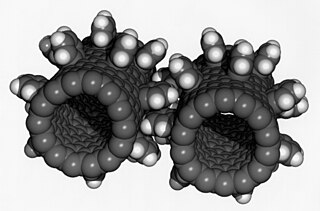 W
WBowen's Kale was a reference material produced by British chemist Humphry Bowen and used for the calibration of early scientific instruments intended to measure trace elements during the 1960s.
 W
WA laser is a device that emits light through a process of optical amplification based on the stimulated emission of electromagnetic radiation. The word "laser" is an acronym for "light amplification by stimulated emission of radiation". The first laser was built in 1960 by Theodore H. Maiman at Hughes Research Laboratories, based on theoretical work by Charles Hard Townes and Arthur Leonard Schawlow.
 W
WA magnetic stripe card is a type of card capable of storing data by modifying the magnetism of tiny iron-based magnetic particles on a band of magnetic material on the card. The magnetic stripe, sometimes called swipe card or magstripe, is read by swiping past a magnetic reading head. Magnetic stripe cards are commonly used in credit cards, identity cards, and transportation tickets. They may also contain an RFID tag, a transponder device and/or a microchip mostly used for business premises access control or electronic payment.
 W
WA Michigan left is an at-grade intersection design that replaces each left turn at an intersection between a (major) divided roadway and a secondary (minor) roadway with the combination of a right turn followed by a U-turn, or a U-turn followed by a right turn, depending on the situation.
 W
WThe metal–oxide–semiconductor field-effect transistor, also known as the metal–oxide–silicon transistor, is a type of insulated-gate field-effect transistor that is fabricated by the controlled oxidation of a semiconductor, typically silicon. The voltage of the covered gate determines the electrical conductivity of the device; this ability to change conductivity with the amount of applied voltage can be used for amplifying or switching electronic signals.
 W
WThe metal–oxide–semiconductor field-effect transistor (MOSFET, MOS-FET, or MOS FET), also known as the metal–oxide–silicon transistor (MOS transistor, or MOS), is a type of insulated-gate field-effect transistor (IGFET) that is fabricated by the controlled oxidation of a semiconductor, typically silicon. The voltage of the covered gate determines the electrical conductivity of the device; this ability to change conductivity with the amount of applied voltage can be used for amplifying or switching electronic signals. The MOSFET was invented by Egyptian engineer Mohamed M. Atalla and Korean engineer Dawon Kahng at Bell Labs in 1959. It is the basic building block of modern electronics, and the most frequently manufactured device in history, with an estimated total of 13 sextillion (1.3 × 1022) MOSFETs manufactured between 1960 and 2018.
 W
WNanotechnology, also shortened to nanotech, is the use of matter on an atomic, molecular, and supramolecular scale for industrial purposes. The earliest, widespread description of nanotechnology referred to the particular technological goal of precisely manipulating atoms and molecules for fabrication of macroscale products, also now referred to as molecular nanotechnology. A more generalized description of nanotechnology was subsequently established by the National Nanotechnology Initiative, which defined nanotechnology as the manipulation of matter with at least one dimension sized from 1 to 100 nanometers. This definition reflects the fact that quantum mechanical effects are important at this quantum-realm scale, and so the definition shifted from a particular technological goal to a research category inclusive of all types of research and technologies that deal with the special properties of matter which occur below the given size threshold. It is therefore common to see the plural form "nanotechnologies" as well as "nanoscale technologies" to refer to the broad range of research and applications whose common trait is size.
 W
WA Playboy Bunny is a waitress at a Playboy Club. In the original Playboy Clubs that operated between 1960 and 1988, the Playboy bunnies were selected through standardized training and wore a "bunny suit" costume inspired by the tuxedo-wearing Playboy rabbit mascot. This costume consisted of a strapless corset teddy, bunny ears, black sheer-to-waist pantyhose, a bow tie, a collar, cuffs and a fluffy cottontail. In more recent Playboy Clubs, such as Sin City that was re-opened in 2006, Playboy bunnies wore slightly redesigned costumes that were based on the original bunny suit.
 W
WThe semiconductor industry is the aggregate of companies engaged in the design and fabrication of semiconductors and semiconductor devices, such as transistors and integrated circuits. It formed around 1960, once the fabrication of semiconductor devices became a viable business. The industry's annual semiconductor sales revenue has since grown to over $481 billion, as of 2018. The semiconductor industry is in turn the driving force behind the wider electronics industry, with annual power electronics sales of £135 billion as of 2011, annual consumer electronics sales expected to reach $2.9 trillion by 2020, tech industry sales expected to reach $5 trillion in 2019, and e-commerce with over $29 trillion in 2017.